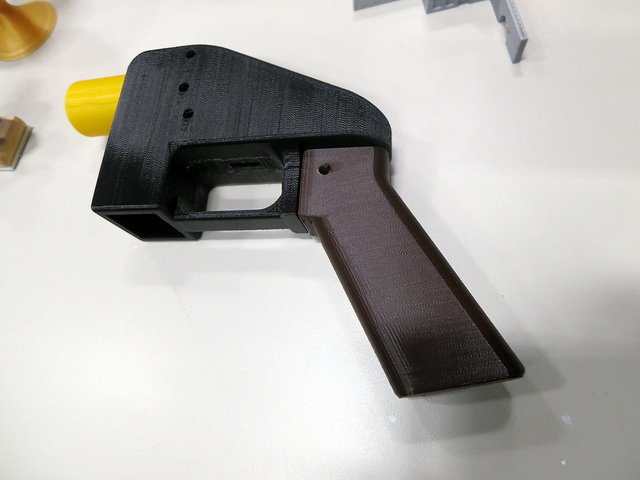The happy go lucky face of 3D printing has started showing its other side, when a Texas law student designed and released the digital blueprints for the world’s first fully printable gun. The freebie was allegedly downloaded more than 1, 00,000 times, ignoring the fact of a domestic ban on distributing the files from the U.S. State Department.
The 3D printed guns are being regarded by many as an issue of national threat. Lawmakers are on the lookout for making these plastic 3D weapons a listed national security threat, which in turns opens the doors for legislation and control of such weapons. The already existing arms act, which is known as the Undetectable Firearms Act was passed in 1988 and was updated in 1998 and re revised in 2003. The act demands that all plastic firearms have enough metal components to trigger a metal detector. This act expires on 9th December, 2013.
To support the skepticism of lawmakers the experts of National Ballistics Intelligence Service (NABIS) conducted an experiment, which shows a 3D printed gun being shot in a safe environment. Using slow motion cameras, the English authorities show barrels exploding, pieces of plastic scattering everywhere and even pieces of the gun being stuck in the ceiling.
Apart from NABIS, there are two other organizations that have conducted similar tests to prove the potential threat that these devices could pose on the security of the nation. An American and an Israeli organization had conducted similar tests which have been rated as misleading customers by Cody Wilson, founder of Defense Distributed, the company that distributes the 3D Liberator printable gun, because during the experiment acetone vapor was not used on the barrel. The other experiment was conducted by the agents at the Bureau of Alcohol, Tobacco, Firearms and Explosives (ATF) spent months testing these plastic weapons. The findings of the bureau suggest that the gun is both lethal and are undetectable under metal scanners. It could take 10-18 hours to print the various parts of the gun. The gun is made out of strong and flexible material with bullets that can penetrate a person’s vital organs or even the skull at a close range. To this Wilson said that the tests that were conducted by the ATF used guns with springs which were not approved for use in the guns. In addition to this Wilson also said that, “Liberator springs don’t even work in the weaker materials that would make the gun explode.”
On the other hand the Detective Chief Superintendent at NABIS, Iain O’Brien, said that reason behind the tests was: “We need to make people aware that producing a firearm in this way is illegal and could cause serious injury to the person holding the gun”.
With the rise of the threat that can be caused by 3D guns there are companies that are coming up with scanners that can detect these plastic guns which otherwise escaped metal detectors. If not for these scanners the only security procedure to catch these 3D printed plastic firearms would have been pat down.
Image Credit: Mirko Tobias Schaefer (flicker handle: gastev)
